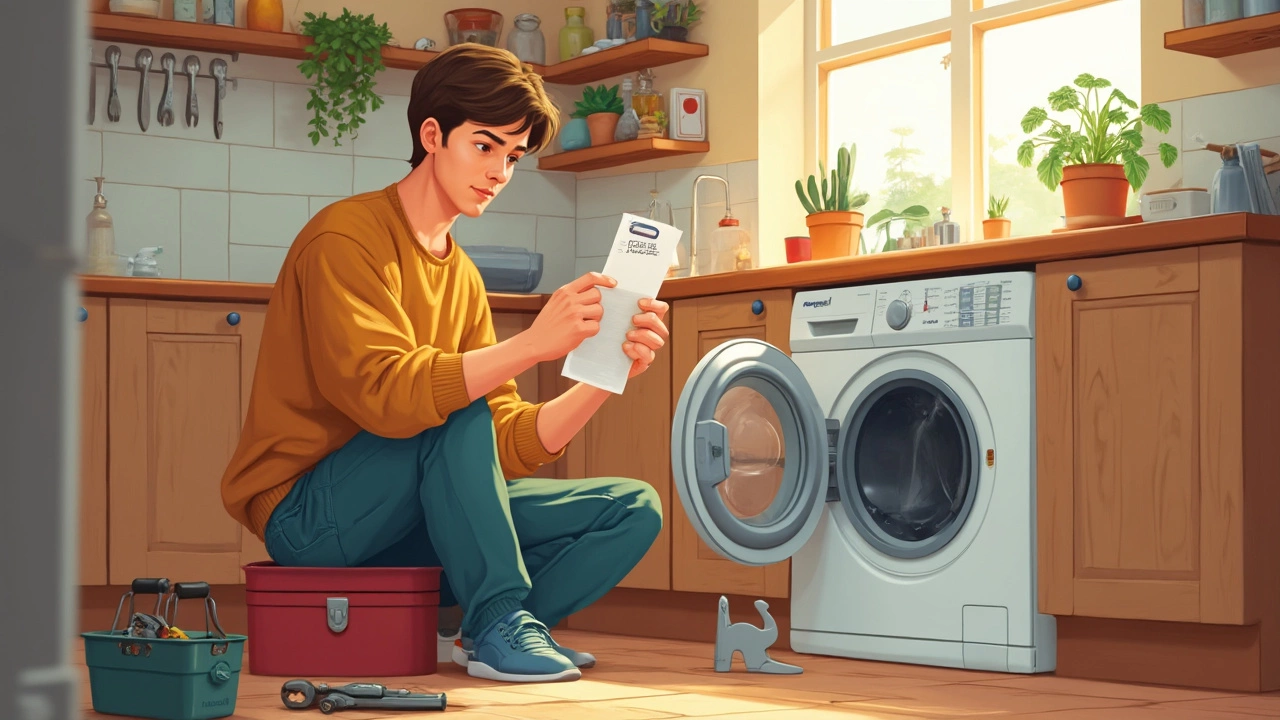DIY Washing Machine Fix: Simple Steps to Get Your Machine Running Again
If your washer has stopped spinning, is leaking, or just won’t start, you don’t have to call a pro right away. Most problems are caused by a few easy‑to‑check parts, and with the right tools you can sort them out in an afternoon. This guide walks you through the most common faults, the tools you’ll need, and a step‑by‑step plan to fix them safely.
Common Problems You Can Fix
1. Washer won’t spin. Usually it’s a broken lid switch, a clogged pump, or a worn drive belt. The lid switch tells the machine it’s safe to spin; if it’s faulty the drum stays still.
2. Water leaks. Check the hoses for cracks, the door seal for wear, and the detergent drawer for blockages. A loose hose clamp can also cause a steady drip.
3. Excessive vibrations. Most of the time the machine isn’t level. Use a spirit level, tighten the feet, and make sure the load is balanced – avoid washing a single heavy item.
4. Error codes. Modern washers display codes like “E1” or “F04”. Look them up in the manual; they often point to a sensor or water inlet issue that you can reset or replace.
Step‑by‑Step DIY Repair Guide
Gather your tools. You’ll need a screwdriver set (Phillips and flat‑head), pliers, a socket wrench, a towel, and a bucket. If you plan to replace a belt or motor, have the specific replacement part on hand.
1. Unplug and move the machine. Safety first – always disconnect power. Pull the washer away from the wall so you can see the back and bottom.
2. Inspect hoses and seals. Look for any wet spots or cracks. Tighten any loose clamps and replace damaged hoses. For a door seal, run your hand along the rubber; if you feel torn sections, replace the seal.
3. Test the lid switch. Open the lid and locate the small button on the side of the drum. Using a multimeter, check for continuity. No continuity means the switch is bad – replace it.
4. Check the pump and filter. Pull out the pump access panel (usually at the front bottom). Remove any lint or small objects. If water still won’t drain, the pump impeller may be stuck; clean it or swap the pump.
5. Replace the drive belt (if needed). Remove the back panel, locate the rubber belt around the motor pulley and drum pulley. Slip the belt off, note its routing, and fit the new belt snugly. Re‑assemble the panel.
6. Level the machine. Place a spirit level on top of the washer. Adjust the front or rear feet until the bubble is centered. This reduces shaking and protects internal parts.
7. Run a test cycle. Plug the machine back in, close the lid, and start a short wash. Watch for leaks, listen for odd noises, and make sure the spin finishes.
If the problem persists after these steps, the issue may be internal (motor, control board) and calling a qualified technician is the safest route. But most everyday hiccups can be solved with the basics above, saving you time and money.
Remember, the key to a successful DIY fix is patience, a clean workspace, and double‑checking each connection before you power the unit back up. With a little effort, your washing machine will be back to cleaning clothes in no time.
